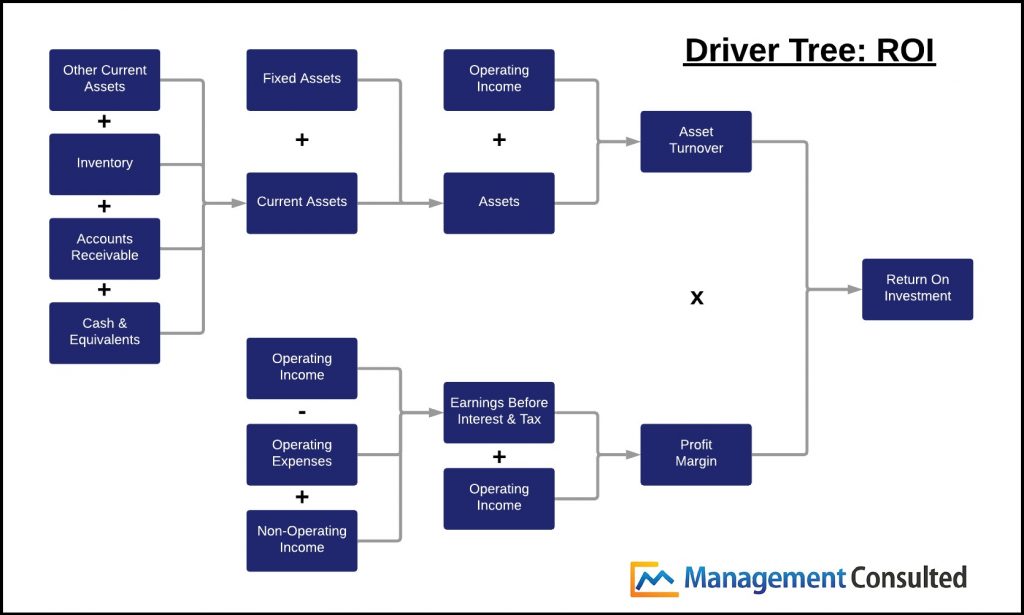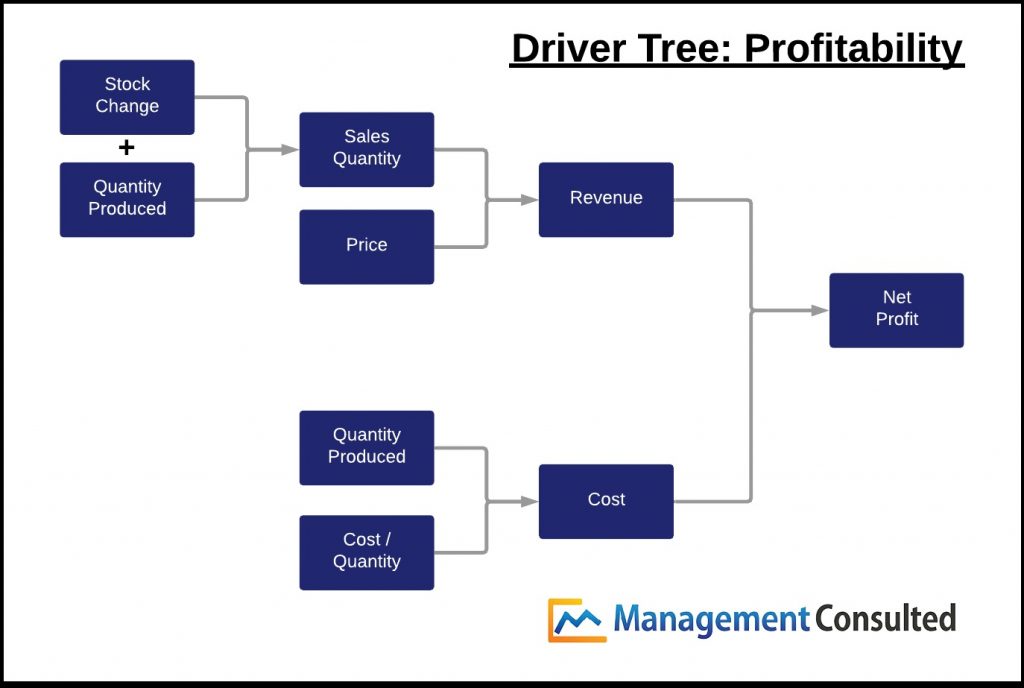The driver tree is one of the oldest frameworks for business thinking. The tool’s roots trace back to the 1920s, when DuPont used the driver tree to define Return on Investment (ROI) as a function of profitability, financial leverage, and asset turnover.
Sound confusing? Don’t worry about the fancy finance lingo - that’s not what’s important.
In this article, we’ll be going over exactly what a driver tree is and why it’s stood the test of time as a useful business method.
Driver Tree Definition
The driver tree is a way for businesses (and consultants) to understand the impact of changes to key variables that change overall outcomes. The driver tree focuses on visually laying out the smaller components that drive value in a business.
Users of the methodology can then focus on the components that are either driving the most or least value, and adjust strategy accordingly in order to impact the broader outcome.
[optin-monster slug="oa6kdflxsmp4bi4azzgi" followrules="true"]
Why Is The Framework Helpful?
Businesses face big, hairy, complex problems. It’s much more manageable to look at the smaller components of a business rather than immediately trying to change the broad overall strategy. This is what driver trees are excellent for.
Additionally, companies are often made up of several divisions and components that sum up to a whole. Visually seeing how these different variables interact and affect one another is extremely helpful for brainstorming and strategizing. Then, once you've identified the drivers impacting overall profitability (or whatever the problem may be) you can utilize the 80/20 rule to prioritize next steps.
Driver Tree Example
Below is an example of the driver tree for the ROI metric. As you can see, various different components are connected to larger variables and ultimately the overall outcome. When any of these components are changed, the outcome changes as well.

Driver Tree vs. Issue Tree
You may have come across a similar “tree” called the issue tree, and may be wondering what the difference is between an issue tree versus a driver tree. The two in fact are quite similar - with one key difference.
While both are visual trees that break down a larger problem into its component parts, the driver tree’s components are all interlinked. If you look at the driver tree in the example above, a change to any of the smaller components will create a domino effect that changes the overall outcome.
On the other hand, an issue tree has components that are mutually exclusive and distinct from one another. In fact, in case interviews, being Mutually Exclusive and Collectively Exhaustive (MECE) is what defines a good issue tree. Therefore, in contrast with the above example, changes to smaller components do not necessarily link to other variables.
The Drawback
Because companies are so vast and complex, the biggest challenge with driver trees is data collection. The larger the company, the more difficult it is to gather the right data, which by the way, is probably changing on a daily basis.
For example, let’s say you create a value tree that is focused on profitability like the one below:

Imagine that you own a large company with 20 different products and services and have been in business for 5 years. In order to get the right information, you will likely need to contact many employees from various departments who will have to organize a vast amount data to get you the right information. Afterwards, a team will need to organize and evaluate the components that fit into the driver tree.
All of this takes an immense amount of effort for any team. Of course, technology and various software tools have made this process much easier, but a considerable amount of time must still be invested to correctly implement the methodology - and run analysis!
Once completed, however, the analysis brings about extremely valuable insight to help you quickly adjust strategy in a data-driven way. Are you looking to train your employees in data analysis, executive presentation skills, and strategy? Learn more about the corporate training we conduct at global F500 companies.
Related Content:
[optin-monster slug="re5xzux7lhoeovaashvd" followrules="true"]